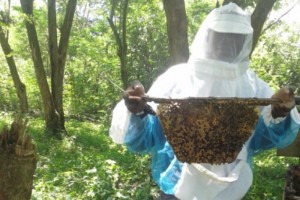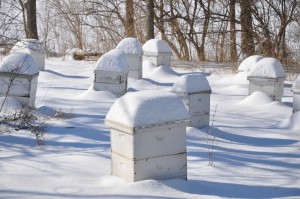In cooperation with the University of Kentucky’s Ecological Research and Education Center (EREC), a one day beginning beekeeping class will be held on February 28th (Saturday), in Lexington, Kentucky. All instruction will be provided by Phil Craft. Registration will be limited to 40 participants, and pre-registration is required. The class will cover:
• A brief introduction to honey bee biology and behavior: Beekeepers manage their colonies through an understanding of basic honey biology. The course begins with these fundamentals.
• How beekeepers keep bees: Beekeeping is much more than getting a hive and some bees and placing them in your backyard. Even though our grandfathers may have done it that way, modern beekeeping requires management – much like keeping other, larger livestock. Beekeepers must monitor, and sometimes intervene, to keep their bees healthy and productive. This phase of the course offers an overview of what this management involves.
• An introduction to beekeeping equipment: The first step in owning your own hive is the purchase of the hive itself, along with protective clothing, and a few other pieces of essential equipment. This portion of the course will demonstrate the equipment and provide information on where it can be purchased, and estimated start-up costs.
• Getting started as a beekeeper: Once you know the basics, you’ll need to know where to get bees, and how to go about setting up a hive. We’ll cover where to locate a hive, where to purchase bees, and how to install them.
• 1st year hive management: The final section of instruction will be an overview of management issues, including potential problems which may arise in the first year of beekeeping.
• Question & answer session: Before we disperse for the day, you will have an opportunity to ask additional questions in an informal question/answer session.
The course will be held from 9:00 AM to 4:30 PM at the University of Kentucky’s Ecological Research and Education Center (EREC) at 1737 Russell Cave Road in Lexington. Find out more about EREC at http://darwin.uky.edu/~erec/.
Course material provided will include handouts, the beginner beekeeping primer First Lessons in Beekeeping, by Dr. Keith Delaplane, and Phil’s contact information for follow-up questions and opportunities for future instruction.
The course fee is $40; pre-registration is required; class size will be limited to 40 participants. Contact Phil for at phil@philcrafthivecraft.com for a registration form, or for more information.


